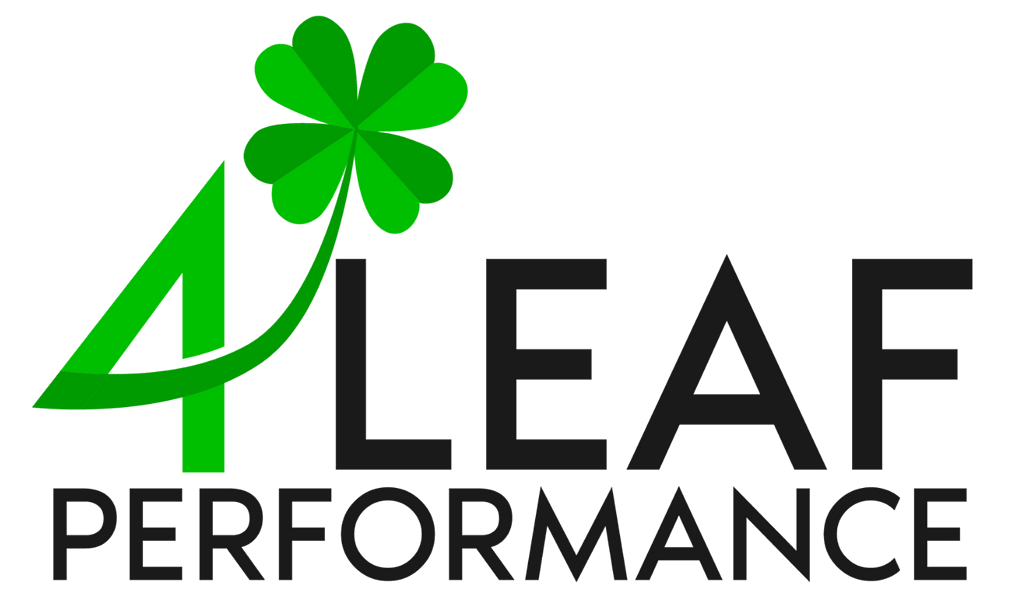Cash flow management is often the linchpin of a business’s success, especially for entrepreneurs. While many factors contribute to the health of a business, the ability to manage cash effectively stands out for its direct impact on daily operations and long-term sustainability.
Unfortunately, even the most visionary entrepreneurs can grapple with this, from delayed receivables to unexpected expenses, leading to critical financial strain. According to a U.S. Bank Study, poor cash flow management is the number one reason why businesses fail. It is responsible for 82% of business failures in the United States.
So, we’ve put together this guide to arm entrepreneurs with the knowledge and tools necessary for effective cash flow management. By understanding its nuances, analyzing financial statements, and implementing strategic practices, entrepreneurs can avoid common pitfalls and position their businesses for growth and success.
Understanding Cash Flow
The Significance of Cash Flow
At its core, cash flow represents the movement of money in and out of your business. It’s a snapshot of your financial health, showing how well you manage your income versus your expenses.
It’s crucial because it impacts every aspect of your business. Positive flow means your business has more money coming in than going out, which indicates financial health. On the other hand, negative flow indicates that your business might be struggling to meet its financial obligations, which could lead to borrowing, late payments to creditors, or business failure in the worst-case scenario.
Cash Flow vs. Profit
It’s important to differentiate between cash flow and profit. A business can be profitable on paper but still face cash flow problems if the cash timings don’t align. For instance, if your receivables are delayed but your payables are due, you might encounter a cash crunch despite showing a profit in your financial statements. This distinction underscores why cash flow management is critical, irrespective of your business’s profitability.

Analyzing Your Cash Flow
Regular analysis of your cash flow is essential for maintaining a healthy business. It allows you to understand the dynamics of your financial operations, identify potential issues before they escalate, and make informed decisions.
Understanding Cash Flow Statements
A cash flow statement is a financial document that provides a detailed breakdown of the cash inflows and outflows from operating, investing, and financing activities over a specific period. Here’s a brief overview of each component:
- Operating Activities: This section includes collecting receivables, payment of suppliers, salaries, and other operational expenses.
- Investing Activities: This is related to the purchase or sale of assets, such as equipment or property and investments in securities.
- Financing Activities: This part details financing activities like loans, equity, and dividend payments.
Importance of Regular Cash Flow Analysis
Regular cash flow analysis helps identify trends and patterns that could impact your business’s liquidity. By analyzing your statements periodically (monthly, quarterly), you can foresee periods of tight liquidity and take proactive measures, such as arranging for short-term financing or delaying non-essential payments.
Key Metrics and Ratios
- Quick Ratio (Acid Test): This measures your ability to meet short-term obligations with your most liquid assets. A quick ratio greater than 1.0 indicates you have more liquid assets than current liabilities, which is favorable for short-term financial health.
- Operating Cash Flow Ratio: This ratio compares the cash generated from operations to current liabilities. A ratio greater than 1 indicates that your operations generate enough cash to cover your short-term liabilities.
- Cash Conversion Cycle: This metric assesses the time it takes for your business to convert its inventory and other resources into sales. A shorter cycle indicates more efficiency
Strategies for Improving Cash Inflows

Accelerating Receivables
One of the most effective ways to improve cash inflows is by speeding up the collection of receivables. Consider implementing the following tactics:
- Invoicing Promptly: Ensure invoices are sent immediately after goods or services are delivered to reduce the time it takes to get paid.
- Clear Payment Terms: Establish and communicate clear payment terms upfront to avoid any confusion or delays in payment.
- Early Payment Incentives: Offer discounts or other benefits to customers who pay their invoices early.
- Electronic Payments: Encourage customers to use electronic payment methods for faster processing.
Optimizing Payment Terms
Review and adjust your payment terms if necessary to encourage quicker payments:
- Shorten Payment Terms: Consider reducing the standard payment terms from, for example, 30 days to 15 days to encourage faster payments.
- Deposit Requirements: A deposit should be required upfront for larger projects or orders.
Enhancing Sales and Marketing
Boosting sales is a direct way to increase cash inflows:
- Marketing Campaigns: Invest in targeted marketing campaigns to attract new customers and increase sales volume.
- Cross-Selling and Upselling: Maximize the value of existing customers by offering complementary products or services.
- Customer Loyalty Programs: Implement loyalty programs to encourage repeat business from existing customers.
Diversifying Revenue Streams
Relying on a single source of income can be risky. Diversifying revenue streams can stabilize cash inflows:
- New Products or Services: Explore opportunities to offer new products or services that meet your customers’ needs.
- Alternative Sales Channels: Expand into new markets or sales channels, such as online, to reach a broader audience.
- Strategic Partnerships: Collaborate with other businesses to offer bundled services or co-promotions that can drive additional sales.
Managing Cash Outflows
Effectively managing your cash outflows is as crucial as optimizing inflows to maintain a healthy cash flow balance. By carefully controlling when and how money exits your business, you can ensure you always have enough cash to meet your obligations. Here are several strategies to manage your cash outflows more effectively:
Optimizing Operational Expenses
- Regular Expense Review: Conduct periodic reviews of all business expenses to identify areas where you can cut costs without sacrificing quality or operational efficiency.
- Negotiate with Suppliers: Regularly negotiate terms and prices with suppliers to reduce costs. Consider bulk purchasing or long-term contracts for better rates.
- Outsource Non-Core Activities: Outsourcing non-essential functions can be more cost-effective than maintaining them in-house, reducing overall expenses.
Managing Payment Terms
Strategically managing when you pay your bills can help maintain a healthy cash balance:
- Leverage Payment Terms: Take full advantage of the payment terms offered by your suppliers. If a supplier offers 30-day terms, use the entire period to aid your cash flow management.
- Prioritize Payments: Prioritize payments based on their urgency and the potential consequences of late payment. Essential services and suppliers critical to your operations should be top priorities.
Controlling Major Expenditures
- Capital Expenditure Planning: Plan major capital expenditures well in advance and evaluate their expected return on investment (ROI). It helps in ensuring that large outlays contribute to business growth.
- Lease vs. Buy Decisions: Consider leasing as an alternative for expensive equipment or machinery. Leasing can reduce the immediate impact on your cash flow.
Cost-effective Investment Strategies
- Incremental Investments: Instead of making significant one-time investments, consider incremental investments that allow you to assess their impact on your business before committing more resources.
- ROI Analysis: Always evaluate the potential return on any investment. Focus on investments that offer quick and significant returns to improve your cash flow.
Cash Flow Forecasting
Forecasting is critical to effective cash flow management, enabling entrepreneurs to predict future cash positions and make informed business decisions. A well-constructed forecast acts as a roadmap for financial planning, helping you anticipate cash shortages and surpluses.

Importance of Accurate Cash Flow Forecasting
Accurate forecasting is crucial for several reasons:
- Avoiding Cash Shortages: By identifying potential cash shortages in advance, you can take preemptive measures, such as securing financing or adjusting supplier payment terms.
- Strategic Decision Making: Forecasts provide insights that support strategic decisions, such as hiring new employees, expanding operations, or making significant purchases.
- Investor and Lender Confidence: A well-maintained cash flow forecast can build confidence among investors and lenders by demonstrating your business’s financial planning and stability.
The Process of Cash Flow Forecasting
- Start with Current Cash Position: Begin your forecast by establishing your current cash position, giving you a solid foundation to project future flows.
- Estimate Incoming Cash: Based on past trends, contractual obligations, and expected sales, estimate the cash you anticipate receiving during the forecast period. Consider seasonal variations and market conditions that might affect your inflows.
- Project Outgoing Cash: List all expected expenses, including fixed costs like rent and salaries and variable costs that may fluctuate, such as raw materials. Don’t forget to include loan payments, tax obligations, and any planned capital expenditures.
- Adjust for Timing: Ensure that the timing of each inflow and outflow is realistically represented in your forecast to reflect how cash moves through your business accurately.
Tools and Software for Cash Flow Forecasting
- Accounting Software: Many accounting software packages offer built-in cash flow forecasting tools that integrate with your existing financial data, automating much of the forecasting process.
- Dedicated Forecasting Tools: Specialized cash flow forecasting tools provide more detailed and customizable forecasting capabilities, allowing for more complex analyses.
Using Forecasts for Decision-Making
- Regular Updates: Regularly update your forecast with actual figures and adjust for any changes in your business environment to keep it accurate.
- Scenario Analysis: To understand potential outcomes and plan accordingly, use your forecast to run different scenarios, such as the impact of a major purchase or the loss of a significant customer.
Maintaining a Cash Reserve
A cash reserve is an essential safety net for any business, providing a buffer to help you navigate unexpected financial challenges or take advantage of sudden opportunities. Here’s how to approach building and managing a cash reserve:
The Importance of a Cash Reserve
- Emergency Fund: A cash reserve acts as an emergency fund to cover unforeseen expenses, such as emergency repairs or sudden drops in revenue, ensuring that these surprises don’t destabilize your business.
- Opportunity Fund: Besides emergencies, a cash reserve can also serve as an opportunity fund, allowing you to invest in growth opportunities quickly without needing external financing.
- Financial Stability: Having a cash reserve contributes to the overall economic stability of your business, enhancing your credibility with lenders, investors, and other stakeholders.
How Much Cash Reserve is Advisable
- Industry Standards: The ideal size of a cash reserve can vary significantly depending on your industry, business model, and operational needs. However, a common rule of thumb is to have enough cash to cover 3 to 6 months of operating expenses.
- Risk Assessment: Consider the level of volatility in your revenue streams and the fixed nature of your expenses. Businesses in more volatile industries or with higher fixed costs may need a larger reserve.
Building Your Cash Reserve
- Start Small: If immediately setting aside a significant amount is challenging, start small and gradually build up your reserve. Even a modest reserve is better than none.
- Allocate Profits: Designate a portion of your monthly profits to go directly into your cash reserve until you reach your target.
- Cut Unnecessary Expenses: Review your expenses regularly and identify areas where you can cut back without impacting your business operations, funneling the savings into your reserve.
Managing Your Cash Reserve
- Separate Account: Keep your cash reserve in a separate account to avoid the temptation of dipping into it for day-to-day expenses. A high-yield savings account is a good option as it allows your reserve to grow while remaining accessible.
- Regular Reviews: Monitor your cash reserve regularly to ensure it meets your changing business needs and adjust accordingly.
- Use Wisely: Be prudent about when to use your cash reserve. It should be reserved for genuine emergencies or well-considered opportunities that align with your long-term business goals.
Leveraging Financing Options Wisely
Access to external financing can be a valuable tool for managing cash flow, enabling entrepreneurs to cover shortfalls, invest in growth opportunities, and maintain operational stability. However, it’s crucial to approach financing strategically to avoid over-leverage and ensure that debt serves your business’s long-term interests. Here are key considerations for leveraging financing options:
Overview of Financing Options
- Business Loans: Traditional bank loans offer a lump sum that can be used for various purposes, with repayment terms set over a specific period.
- Lines of Credit: A line of credit provides flexible access to funds up to a certain limit, which can be drawn upon as needed, making it ideal for managing cash flow fluctuations.
- Invoice Financing: This option allows you to borrow against the value of your outstanding invoices, providing immediate cash flow relief without waiting for payment terms to elapse.
- Equity Financing: Raising funds through equity involves selling a portion of your business ownership in exchange for capital, which can be a viable option for startups and growth-phase businesses.
Choosing the Right Financing Option
- Cost of Capital: Consider the interest rates and fees associated with different financing options to understand the actual cost of borrowing.
- Repayment Terms: Evaluate the repayment terms to ensure they align with your projections and business cycle. Flexible repayment terms can ease cash flow pressure during lean periods.
- Impact on Cash Flow: Assess how the financing option will impact your cash flow. For instance, a loan might provide immediate relief but consider if the monthly repayments are sustainable based on your forecast.
Tips for Managing Debt Responsibly
- Purposeful Borrowing: Borrow for specific, strategic purposes rather than covering ongoing operational shortfalls, ensuring that the debt contributes to growth or efficiency.
- Debt Servicing Plan: Have a clear plan for how you will service the debt, including how the borrowed funds will generate the necessary returns to cover repayments.
- Monitor Debt Levels: Regularly review your debt levels concerning your equity and cash flow to avoid over-leveraging, which can put your business at risk.
Utilizing Technology for Cash Flow Management
In today’s digital age, leveraging technology is crucial for efficient and effective cash flow management. The right tools can automate processes, provide real-time financial insights, and ultimately help you make better-informed business decisions.
Cash Flow Management Tools and Software
- Accounting Software: Modern accounting platforms like QuickBooks, Xero, and FreshBooks offer comprehensive financial management features, including invoicing, expense tracking, and financial reporting. These tools can automate many tedious tasks, such as reconciling bank statements and generating forecasts.
- Dedicated Cash Flow Solutions: Specialized management tools that focus solely on forecasting and analyzing cash flow, providing detailed insights and predictive analytics to help you plan for the future are available.
- Payment and Invoicing Systems: Online payment platforms and invoicing systems can streamline the process of billing and collecting payments, making it faster and easier to manage receivables and improve cash inflows.

Automating Cash Flow Management Processes
- Automated Invoicing: Set up automated invoicing systems to ensure that invoices are sent out promptly after a sale or service is completed, reducing the time it takes to receive payment.
- Automated Alerts: Use software that offers alert features to notify you of important cash flow events, such as when your cash balance falls below a certain threshold or when large expenses are due, helping you stay on top of your cash position.
- Automated Reporting: Regular financial reports are essential for monitoring your cash flow status. Many software solutions can generate these reports automatically, giving you regular insights into your financial health without additional manual effort.
Real-Time Financial Insights
- Dashboards: Many cash flow management tools come with dashboards that provide an at-a-glance view of your financial status, including your current cash position, outstanding invoices, and upcoming bills.
- Mobile Access: With cloud-based solutions, you can access your financial data from anywhere, anytime, using a mobile device, allowing you to make informed decisions on the go.
Mastering Cash Flow Management for Business Success
Effective cash flow management is the cornerstone of a successful business. As we’ve explored throughout this guide, understanding your cash flow, analyzing financial statements, improving cash inflows, managing outflows, forecasting future cash positions, maintaining a cash reserve, leveraging financing wisely, and utilizing technology are all critical components of a robust cash flow management strategy. By implementing these practices, entrepreneurs can confidently navigate financial uncertainties, ensure operational stability, and position their businesses for sustainable growth and success.
Are you ready to take your business to the next level with expert guidance and strategic insights? 4 Leaf Performance offers comprehensive business coaching services to help entrepreneurs like you master the art of cash flow management and unlock your business’s full potential. Whether you’re struggling with business challenges, looking to optimize your financial operations, or seeking to accelerate your business growth, our team of experienced coaches is here to support you at every step.
Don’t let cash flow challenges prevent you from achieving your business goals. Contact 4 Leaf Performance today to learn more about how our business coaching services can transform your approach to financial management and propel your business forward. Let’s work together to turn your business aspirations into reality.



